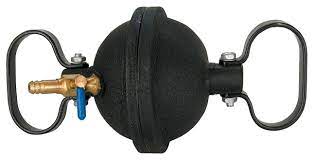
Magdeburg hemispheres / cast iron
馬格德堡半球 / 注鐵款
HK$1113.00
The Magdeburg hemispheres experiment was conducted by Otto von Guericke, a German scientist, in the 17th century. It was designed to demonstrate the power of atmospheric pressure.
In the experiment, two hollow hemispheres were tightly sealed together to create a vacuum inside. One of the hemispheres had a valve attached to it. When the air was pumped out from the inside using a vacuum pump, a strong vacuum was created between the hemispheres.
To demonstrate the strength of the vacuum, von Guericke would attempt to separate the hemispheres using horses or other mechanical means. However, due to the atmospheric pressure pushing from the outside, it proved to be extremely difficult to separate the hemispheres.
This experiment demonstrated the strength of atmospheric pressure and the difficulty of separating objects in a vacuum. It helped to establish the concept of atmospheric pressure and contributed to the understanding of gas behavior.
馬格德堡半球實驗是由德國科學家奧托·馮·格里克在17世紀進行的。 它的目的是展示大氣壓力的力量。
在實驗中,兩個空心半球緊密密封在一起,在內部形成真空。 其中一個半球上附有一個閥門。 當使用真空幫浦從內部抽出空氣時,半球之間會產生強大的真空。
為了證明真空的強度,馮·格里克嘗試使用馬或其他機械手段將兩個半球分開。 然而,由於來自外部的大氣壓力,分離半球被證明是極其困難的。
該實驗證明了大氣壓力的強度以及在真空中分離物體的困難。 它有助於建立大氣壓力的概念,並有助於理解氣體行為。

